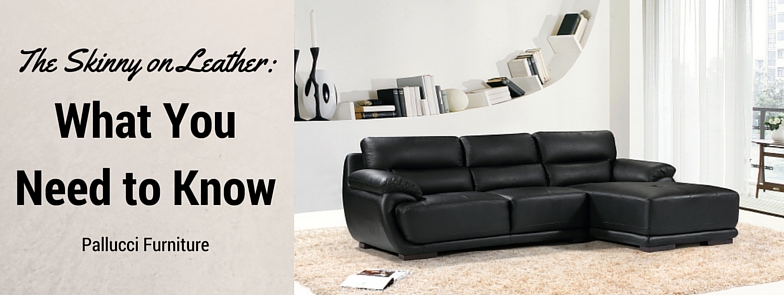
One of the ultimate choices for upholstered furniture is leather. It’s beautiful, soft, durable and enhances any décor. There are also many different options when it comes to buying leather furniture, caring for it and preserving it, so we thought we’d give you the short, comprehensive guide to leather types and care.
Types of Leather
All Ferraris are cars, but not all cars are Ferraris, and the same can be said about leather furniture, in that it may all be leather, but it’s not created equal. When you’re shopping for leather furniture, bear the following in mind, and choose your furniture accordingly:
Full grain leather is natural, untouched, dyed, premium leather. It’s high quality, and it often includes unique features like hide imperfections.
Top grain leather is the best of the types that is used for leather sofas, and it’s made from the top layer of the hide.
Corrected grain leather means that the imperfections in the hide have been removed, and an artificial grain removed. Semi corrected grain is where only the areas with marked imperfections is removed and corrected.
Split grain is the back of the hide. When leather is processed for upholstery, only the top layer is required for top grain leather. The back layer of the hide is also processed, and while it is lower quality, it is also used for furniture.
There are many interesting things to know about genuine leather and how to identify it. Leather products come from a variety of animals, including cow hide, sheep skin, pig skin and wild animal hides. If you are concerned about which animal’s hide has been used, make sure you ask, because it’s not always marked.
Leather Finishes
There are a variety of finishes that are applied to leather furniture too, all of which can affect the look, quality and feel of your chair or sofa.
Aniline dyed leather uses a non-toxic, transparent dye to colour the leather but allow the grain to show through. Protected aniline adds pigment to the dye, creating a harder wearing, more pronounced finish on the leather.
Leather match furniture uses real leather on the visible parts of your furniture, but teams it up with similarly coloured vinyl. This won’t affect the look of the piece, but it does make it cheaper.
Bi cast and bonded leather are both partially made from leather, with various types of synthetic material used as substrate or finish. Technically, it’s part leather, part not leather, but it’s also much cheaper, and can still look great.
Caring for Leather Furniture
If you want to get the most out of your leather furniture, you need to make sure that you take good care of it. There are several things you should be doing to make sure your sofa or chair is the lifetime piece it was designed to be:
Try to keep pets off leather furniture. Some types of leather have a polyurethane coating over the surface, and when that gets damaged, your furniture can start looking shabby.
Only use cleaners designed for use on leather, and test new products on a hidden area of the furniture.
Wipe up wet stains or spills immediately. While leather will shrug off most things, very wet spots can lead to mold.
If you have a major stain on a leather piece, that won’t come off with a soft cloth, luke warm water and a mild cleaner, consult a professional. You can actually do a lot more damage to the surface of leather furniture when you scrub vigorously than you think.
Good quality leather furniture is a lifetime investment piece. Make sure you choose a classic piece, buy the best quality you can afford, and be sure to treat it gently. If you do all of those things, you should have a piece of furniture that will be with you for decades to come.

